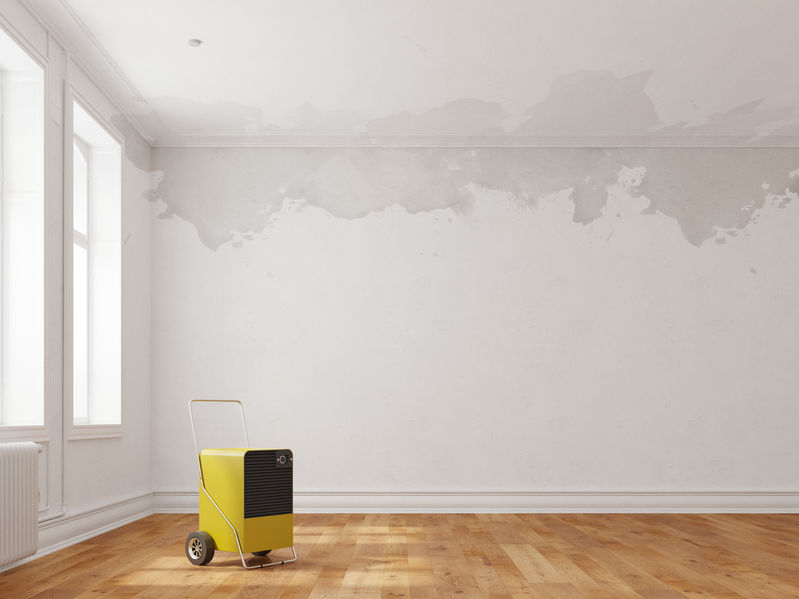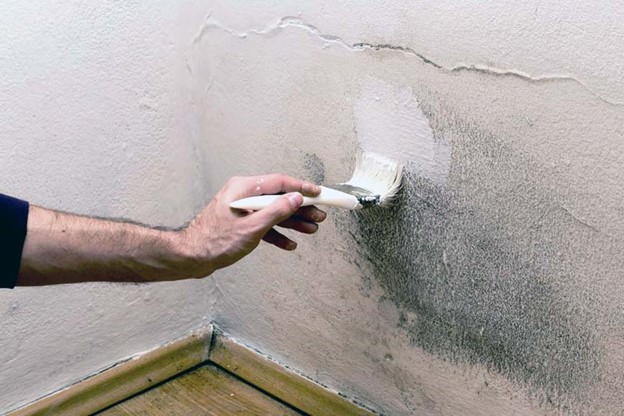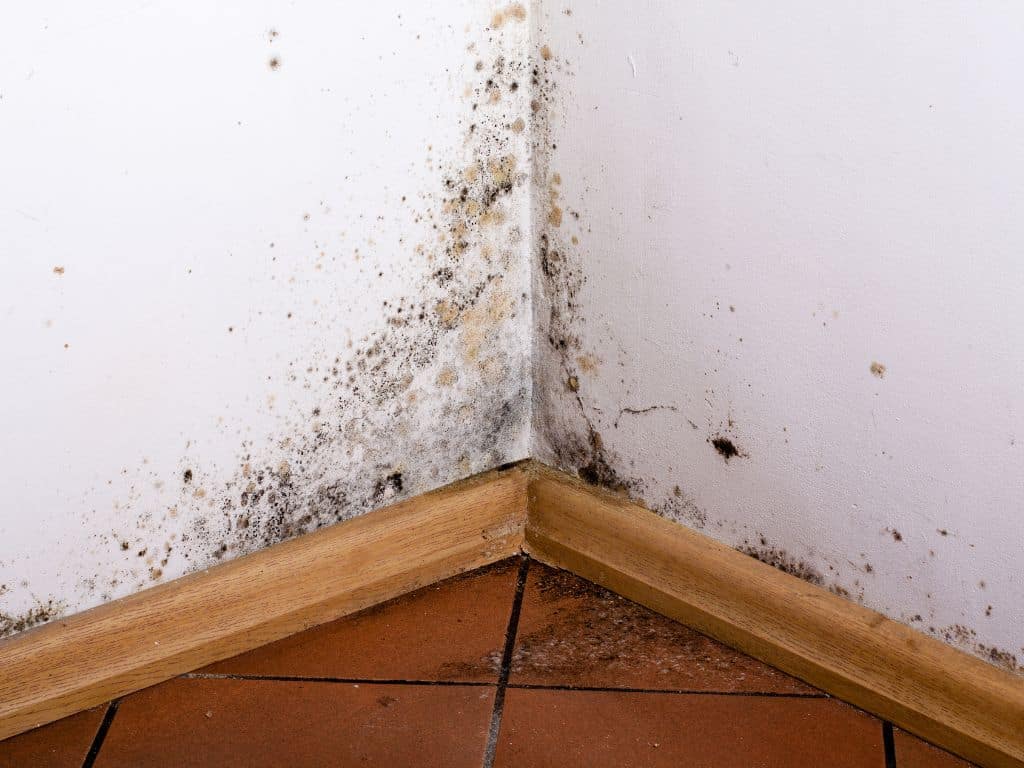You may be wondering if mold will disappear on its own if you let it dry out. While it’s tempting to leave the moldy area untouched and hope for the best, it’s important to understand the behavior of mold and how to effectively address the issue. In this article, we will explore whether mold can simply disappear when it dries and provide you with the necessary information to tackle this problem head-on. So, let’s get started and find out the truth about mold and its drying process!

Understanding Mold Growth
Mold growth is a common issue that many homeowners face. It can be unsightly and even pose potential health risks if left untreated. Understanding the conditions and places where mold tends to grow is essential for effectively preventing and addressing this problem in your home.
Conditions for Mold Growth
Mold thrives in environments with specific conditions. One crucial factor is moisture. Mold requires a source of moisture to grow and spread. Additionally, mold needs organic materials to feed on, such as wood or drywall, as well as a suitable temperature range between 41 and 104 degrees Fahrenheit. Understanding these conditions can help you identify areas in your home that may be susceptible to mold growth.
Common Places for Mold Growth
Mold can grow in various areas of your home. Some common places where mold tends to thrive include bathrooms, basements, attics, and kitchens. These areas are prone to higher levels of humidity and moisture, making them ideal breeding grounds for mold. Additionally, any area affected by water damage or prone to leaks, such as around windows or pipes, can also be vulnerable to mold growth. Regularly inspecting these areas and taking preventive measures is essential in keeping mold at bay.
Effects of Mold on Health
Beyond its unsightly appearance, mold can have adverse effects on your health. It is important to be aware of these potential risks and take the necessary steps to address mold growth promptly.
Respiratory Issues
Mold can trigger respiratory issues, particularly in individuals with pre-existing conditions such as asthma or allergies. When mold spores are inhaled, they can irritate the lining of the airways, leading to symptoms such as coughing, wheezing, and shortness of breath. Prolonged exposure to mold can exacerbate these symptoms and potentially lead to more severe respiratory problems.
Allergic Reactions
Mold can also cause allergic reactions in individuals who are sensitive to it. These reactions may include sneezing, itching, watery eyes, and skin rashes. Some people may experience more severe allergic reactions, such as sinus congestion or even asthma attacks. It’s important to note that everyone reacts differently to mold exposure, and the severity of symptoms can vary. Nevertheless, it’s crucial to address mold growth to minimize the risk of adverse health effects.

Why Mold Needs Moisture
Moisture plays a vital role in mold growth. Without moisture, mold would struggle to survive and reproduce. Understanding mold’s dependence on moisture is essential in effectively preventing and addressing mold issues in your home.
Mold’s Dependence on Moisture
Mold requires moisture to activate and grow. When mold spores come into contact with moisture or high humidity, they begin to germinate and form colonies. Without the presence of moisture, mold spores remain dormant and do not pose a significant threat. However, it’s important to note that mold spores can survive drying out and become active again once moisture returns.
The Role of Moisture in Mold Growth
Moisture provides mold with the necessary conditions to thrive. It aids in the breakdown of organic materials, providing mold with a food source. Additionally, high moisture levels create the ideal environment for mold spores to reproduce and spread. Therefore, controlling moisture levels in your home is crucial in preventing mold growth and addressing any existing mold issues.
Does Mold Die When It Dries?
While mold may appear to die when it dries out, the reality is more complex. Mold spores have a survival mechanism that allows them to stay dormant until moisture returns.
Mold Dormancy
When mold spores dry out, they can enter a state of dormancy. This dormancy allows them to survive harsh conditions and lack of moisture. Dormant mold spores can remain inactive for extended periods, waiting for favorable conditions to revive and start growing again.
Survival of Mold Spores
Mold spores have impressive survival capabilities. They are incredibly lightweight, allowing them to be easily transported through the air and deposited in various environments. Even if mold dries out and appears to be inactive, the spores can still pose a potential health risk once moisture returns. It’s important to understand that mold does not die when it dries, and proper remediation is necessary to ensure its complete removal.

Signs of Drying Mold
Detecting drying mold is crucial in addressing mold growth and preventing further issues. There are several signs that indicate the presence of drying mold in your home.
Discoloration
One of the most common signs of drying mold is discoloration on surfaces. Mold can appear in various colors, including black, green, brown, or even white. If you notice any unusual spots or patches on walls, ceilings, or other surfaces, it’s important to investigate further and take action.
Musty Odor
Another clear sign of drying mold is a strong, musty odor. Mold produces volatile organic compounds (VOCs) that can be detected by a distinct smell. If you notice an unpleasant, musty odor in your home, it could be an indication of underlying mold growth.
Preventing Mold Recurrence
Preventing mold recurrence is crucial in maintaining a healthy and mold-free home environment. With proper preventive measures, you can minimize the risk of mold growth and its associated issues.
Fixing Moisture Problems
Addressing and fixing moisture problems is the key to preventing mold recurrence. Inspect your home for any signs of leaks, condensation, or areas with high humidity. Repair any plumbing leaks promptly, improve ventilation in areas prone to moisture, and consider using dehumidifiers if necessary. By controlling moisture levels, you can significantly reduce the likelihood of mold growth.
Proper Ventilation
Proper ventilation is essential in preventing mold growth. Ensure that your home’s ventilation systems, such as exhaust fans in bathrooms and kitchens, are in good working condition. Adequate ventilation helps to expel excess moisture and maintain optimal airflow, creating an inhospitable environment for mold.

Removing and Cleaning Mold
If you discover mold growth in your home, it’s important to take immediate action to remove and clean it properly. Mold remediation is essential to ensure the health and safety of your household.
Safety Precautions
Before beginning mold removal, it’s crucial to take safety precautions to protect yourself. Wear protective gear, such as gloves, goggles, and a mask, to minimize exposure to mold spores. Additionally, ensure that the affected area is properly sealed off to prevent the spread of mold during the cleaning process.
Cleaning Techniques
There are various cleaning techniques you can use to remove mold from surfaces. For non-porous materials like glass or tiles, a mixture of water and detergent can be effective. Scrub the affected area thoroughly and rinse with clean water. For porous materials such as wood or drywall, it may be necessary to remove and replace the affected materials to ensure complete removal of mold.
Professional Mold Remediation
In some cases, professional mold remediation may be necessary to effectively address mold growth. Understanding when to seek professional help and the associated costs and considerations is important in making an informed decision for your specific situation.
When to Seek Professional Help
It’s recommended to seek professional help if the mold growth covers a large area (typically more than 10 square feet) or if it has spread to sensitive areas such as HVAC systems or insulation. Professional mold remediation experts have the expertise and specialized equipment to handle extensive mold problems safely and effectively.
Costs and Considerations
The cost of professional mold remediation can vary depending on the size of the affected area, the extent of the problem, and the location. It’s advisable to obtain multiple quotes from reputable mold remediation companies and ensure that they follow industry standards and guidelines. Considerations such as insurance coverage and warranties should also be taken into account when making your decision.

DIY Mold Removal Tips
While professional help may be necessary in certain situations, there are some mold removal tasks you can tackle on your own. However, it’s important to approach DIY mold removal safely and effectively.
Wearing Protective Gear
Just like with professional mold remediation, wearing protective gear is crucial when tackling DIY mold removal. Use gloves, goggles, and a mask to minimize exposure to mold spores and prevent any potential health risks.
Using Bleach or Vinegar
Bleach or vinegar can be effective cleaning agents for treating mold on non-porous surfaces. Dilute bleach with water or use vinegar directly and apply it to the affected area. Scrub thoroughly and rinse with clean water. However, it’s important to note that these solutions may not be as effective for porous materials, and proper removal and replacement of affected materials is often necessary.
Understanding Mold Testing
Understanding when to test for mold and the different types of mold testing available can help you assess the extent of the issue and determine the appropriate course of action.
When to Test for Mold
Mold testing may be warranted if you suspect a mold problem but cannot visually or physically confirm its presence. It can also be useful if you have undergone mold remediation and want to ensure that the problem has been effectively resolved. Additionally, individuals experiencing persistent health issues that may be related to mold exposure may consider testing to identify potential mold sources.
Types of Mold Testing
There are various types of mold testing available, including air sampling, surface sampling, and bulk sampling. Air sampling collects mold spores from the air, while surface sampling collects samples from visible mold growth. Bulk sampling involves collecting materials from the affected area for laboratory analysis. Each type of testing has its own advantages and limitations, and it’s important to consult with a qualified professional to determine which method is most appropriate for your specific situation.
In conclusion, understanding mold growth, its effects on health, the role of moisture, and the correct techniques for removal and prevention are essential for maintaining a healthy and mold-free home. Whether you opt for DIY approaches or professional remediation, taking prompt action and prioritizing preventive measures will help you effectively manage and prevent mold issues in the long run. Remember, mold may not die when it dries out, so proper remediation is necessary to ensure complete removal and to create a safe living environment for you and your family.